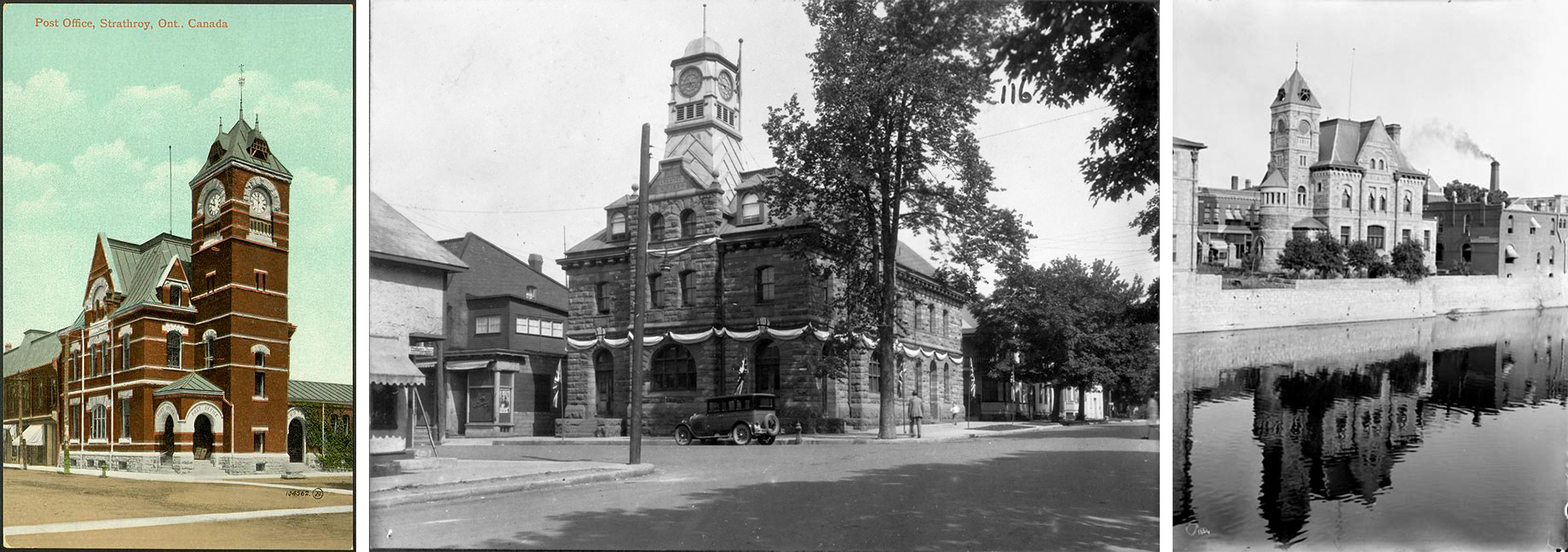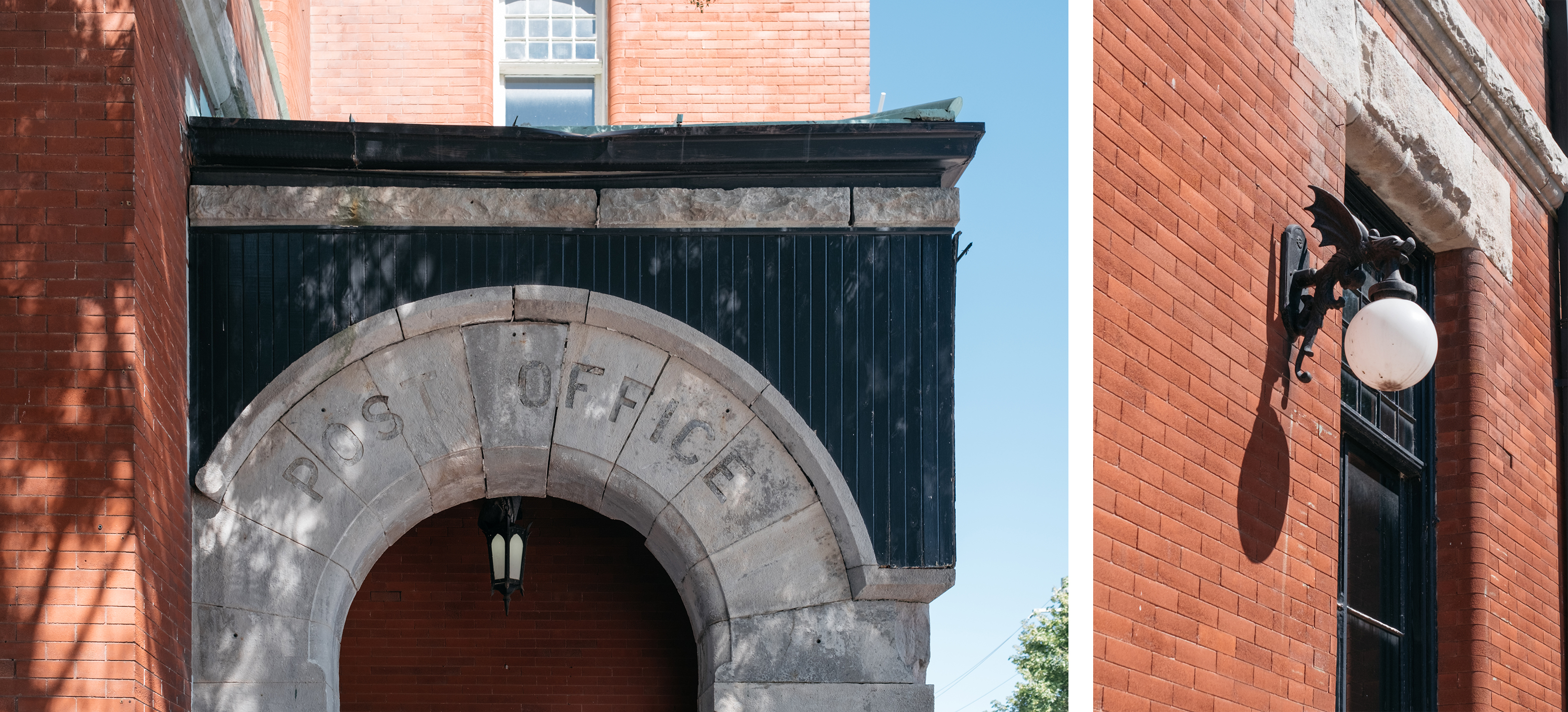Location: Strathroy, Ontario
Date of Completion: 1889-1901
Architect: Thomas Fuller
Designers of Renovations/Additions: In2Space (interior designer)
Nominated by: Monte McNaughton (former MPP for Lambton–Kent–Middlesex)
A former post office, now-turned-restaurant and inn, Strathroy’s Old Post Office and Custom House is not only a much-beloved local landmark, but also an important part of Canadian architectural history.
Thomas Fuller’s Nation Building Legacy
Since it first opened in 1889, Strathroy’s distinctive Post Office and Customs House has been a landmark for this Middlesex community—a clear marker that you are at the historic centre of Strathroy. But what many might not know is that this local landmark is part of a larger national story that connects more than 80 post offices and numerous public structures across Canada.
The Old Strathroy Post Office was designed by Thomas Fuller, a renowned architect who had made his name three decades earlier as part of the winning team for the design of Canada’s Parliament Building in Ottawa. In 1881, after a career in private practice, Fuller was appointed Canada’s Chief Architect in the Department of Public Works. During his 16-year tenure, he would become responsible for the design of numerous buildings across Canada, including post offices such as the one in Strathroy.

Left: Strathroy Post Office, 1910. Image by Valentine & Sons, courtesy of Toronto Public Library. Middle: Smith Falls Post Office, 1927. Image courtesy of Library and Archives Canada. Right: Galt Post Office, 1910. Image courtesy of Library and Archives Canada.
While each of the post offices were unique, they all shared a similar architectural vocabulary. They were two-and-half storeys high, and rectangular in plan with a one-storey rear addition. Along the main street, high gables provided additional visual height and presence to the federal building, and they were always located within the town’s important intersection or at the end of a main roadway. Like Canada’s parliament buildings, which were designed in a most painterly manner, the post offices hadpicturesque features like asymmetrical massing, corner entrances, and clock towers to achieve pleasing compositions. A combination of French Renaissance and High Gothic architectural details added to the visual interest, while local materials—often in contrasting colours—resulted in bold landmarks with a strong sense of place.
Fuller’s work was so prolific and his style so distinctive that the architectural style of these buildings became an identifiable federal image known as the Dominion style, helping establish an identity for the young country so soon after confederation.
 Left: Archway over portico inscribed with “Post Office.” Right: Exterior ornamental light fixture. Images by Kurtis Chen.
Left: Archway over portico inscribed with “Post Office.” Right: Exterior ornamental light fixture. Images by Kurtis Chen.
Adaptive Reuse
In 1964, after Canada Post relocated to a new building, the Old Strathroy Post Office and Custom House went through a number of different uses.
In 2014, the building was purchased by Mark Graham, who undertook an extensive interior renovation to transform the old post office into a restaurant and eight-suites inn, today known as the Clock Tower Inn and Bistro. The renovations also entailed preserving as much of the original structure as possible, including restoring the old clock which had been silent for more than 30 years. For his efforts, Graham was awarded both the 2016 Paul Oberman Award for Adaptive Reuse by the Architectural Conservancy of Ontario, as well as a 2016 London Heritage Award.
By avoiding demolition and instead adapting the structure to new use, Strathroy has not only been able to conserve an important part of Canada’s history, but has also gained a new business that celebrates the community’s past.
This post forms part of our World Architecture Day Queen’s Park Picks 2023 series in which the OAA asked Ontario’s Members of Provincial Parliament (MPPs) to nominate a prominent building, past or present, in their riding for a chance to learn more about it. Check out the rest of the series to learn more about great buildings across the province!